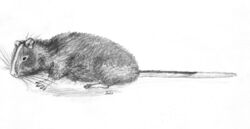| Display title | Biology:Cuscomys oblativus |
| Default sort key | Cuscomys oblativus |
| Page length (in bytes) | 2,665 |
| Namespace ID | 3026 |
| Namespace | Biology |
| Page ID | 943736 |
| Page content language | en - English |
| Page content model | wikitext |
| Indexing by robots | Allowed |
| Number of redirects to this page | 0 |
| Counted as a content page | Yes |
| Page image |  |
| HandWiki item ID | None |
| Edit | Allow all users (infinite) |
| Move | Allow all users (infinite) |
| Page creator | imported>TextAI |
| Date of page creation | 22:45, 26 July 2021 |
| Latest editor | imported>TextAI |
| Date of latest edit | 22:45, 26 July 2021 |
| Total number of edits | 1 |
| Recent number of edits (within past 90 days) | 0 |
| Recent number of distinct authors | 0 |
Description | Content |
Article description: (description)
This attribute controls the content of the description and og:description elements. | Cuscomys oblativus, the Machu Picchu arboreal chinchilla rat, is a large species of South American chinchilla rats, known from skeletal remains found by members of the Peruvian Expedition of 1912. The animals were buried alongside people in ancient Inca tombs at Machu Picchu in Peru. It was considered... |

